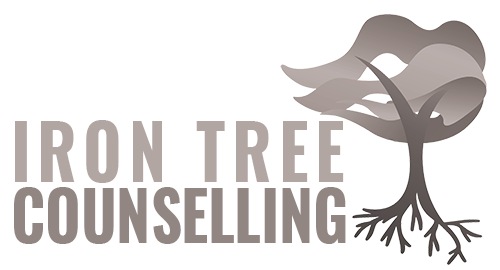Healthy Shame Vs. Unhealthy Shame
Shame is a complex emotion that is often associated with negative experiences, such as guilt, embarrassment, and humiliation. However, not all forms of shame are created equal. Some forms of shame can be healthy and adaptive, while others can be debilitating, toxic and harmful to our well-being and relationships.
What is Healthy Shame?
Healthy shame is a natural and appropriate emotional response that helps us recognize and take responsibility for our mistakes, shortcomings, or transgressions. It is an adaptive emotion that motivates us to correct our behaviour, make amends, and strive for personal growth and improvement. When recognized and used effectively, it can lead to a sense of humility. Healthy shame develops through healthy socialization and interpersonal relationships, particularly in childhood. When we violate social norms or expectations, we may experience healthy shame, which helps us to restore our integrity and social connections.
The difference between shame and guilt is perhaps important to delineate here. Shame is the sense that “I am not good enough” whereas guilt is the feeling that “I have done something wrong.” Shame is more about our sense of personhood and identity whereas guilt is more about our actions/behaviours. Thus, they can both frequently coincide together since most situations involve a feeling/perception of ourselves as a person in relation to the actions/behaviours we have exhibited.
For example, a child who lies to their parent may feel guilty and ashamed, prompting them to apologize and correct their behaviour. Similarly, a person who realizes they have hurt someone’s feelings may feel ashamed and apologize, leading to reconciliation and healing.
Traits Associated with Healthy Shame:
- It is a transient emotion that arises in response to specific behaviours or situations.
- It is proportional to the offense and does not involve self-condemnation or self-blame.
- It motivates us to take corrective action and make amends.
- It does not undermine our self-worth or self-esteem.
- It allows us to recognize our mistakes and learn from them and can lead to humility.
What is Unhealthy Shame?
Unhealthy shame, also known as toxic shame, is a persistent and intense feeling of inadequacy, unworthiness, or defectiveness that can be debilitating and harmful to one’s well-being and relationships. Unlike healthy shame, which arises in response to specific behaviours or actions, unhealthy shame is pervasive and chronic, often manifesting as a fundamental sense of self-loathing or self-hatred.
Unhealthy Shame Development:
- Childhood Experiences: Children who grow up in environments where they feel unloved, unsupported, or rejected may internalize the belief that they are flawed or defective, leading to chronic shame and self-doubt.
- Cultural and Social Messages: Stereotypes, prejudice, or unrealistic expectations about certain groups of people can lead to shame. For example, highly sensitive men (HSM) may experience shame as a result of societal stigma and discrimination.
- Traumatic Events: Survivors of trauma may blame themselves for what happened, leading to feelings of shame and guilt.
Traits Associated with Unhealthy Shame:
- It is persistent and chronic, often unrelated to specific behaviours or actions.
- It is disproportionate to the offense and involves self-blame and self-condemnation.
- It undermines our self-worth and self-esteem.
- It leads to self-criticism, self-doubt, and self-isolation.
- It may manifest in various forms of dysfunctional behaviours, such as substance abuse, eating disorders, self-harm, or aggression.
How to Address Unhealthy Shame?
To address unhealthy shame, it is essential to identify the underlying causes and develop healthy coping strategies. This may involve working with a therapist to process past trauma, challenge negative self-beliefs, and cultivate self-compassion and self-esteem. It may also involve building supportive relationships and engaging in activities that promote self-care, self-expression, and personal growth.
Some Strategies to Address Unhealthy Shame:
- Identifying and challenging negative self-talk and beliefs.
- Practice sharing things about yourself with trusted others. Ideally something you are quite comfortable with sharing but haven’t told many others about it before.
- Developing self-compassion and self-care practices.
- Engaging in activities that promote self-expression, creativity, and personal growth.
- Building supportive relationships and social connections.
- Seeking professional help, such as therapy or counselling, to process past trauma, identify and address negative patterns, and learn healthy coping strategies.
In conclusion, shame is a complex emotion that can be both healthy and unhealthy, depending on its nature and intensity. Healthy shame can motivate us to correct our mistakes, make amends, and strive for personal growth and improvement. Unhealthy shame, on the other hand, can be debilitating and harmful, leading to chronic self-loathing, self-isolation, and dysfunctional behaviours.
By understanding the differences between healthy and unhealthy shame, we can learn to recognize and address unhealthy shame in ourselves and others, cultivate self-compassion and self-esteem, and build healthy relationships and communities.
References:
- Brown, B. (2007). Shame resilience theory: A grounded theory study on women and shame. Families in Society: The Journal of Contemporary Social Services, 88(4), 479-488.
- Kaufman, G. (1993). Shame: The power of caring (3rd ed.). Rochester, VT: Schenkman Books.
- Nathanson, D. L. (1992). Shame and pride: affect, sex, and the birth of the self. New York: W.W. Norton.
- Tangney, J. P., & Dearing, R. L. (2002). Shame and guilt. New York: Guilford Press.
- Tracy, J. L., & Robins, R. W. (2004). Putting the self into self-conscious emotions: A theoretical model. Psychological Inquiry, 15(2), 103-125.
- Van der Kolk, B. A. (2014). The body keeps the score: Brain, mind, and body in the healing of trauma. New York: Penguin Books.




